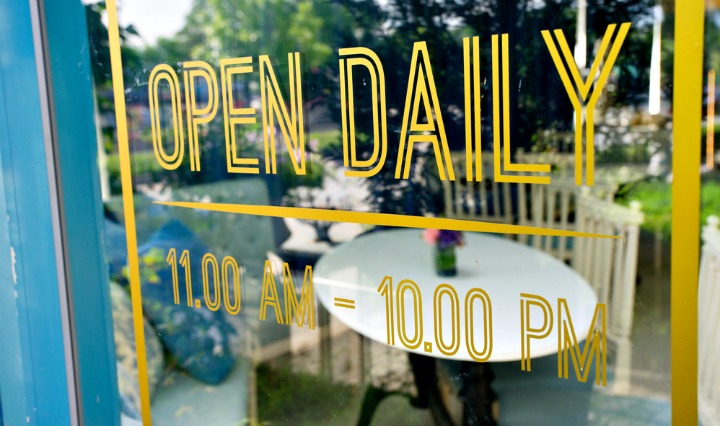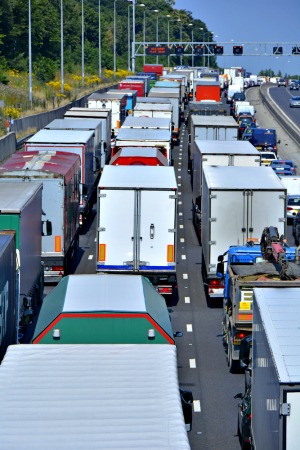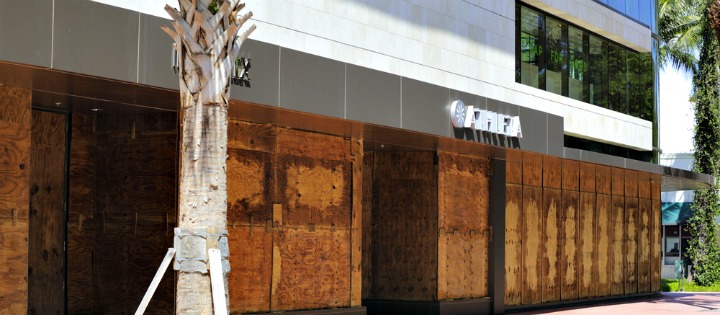How to Protect Your Business From a Natural Disaster

Thinking “it will never happen to me” is a common refrain among business owners when talk turns to natural disasters. That assumption is one of the main reasons why many businesses don’t develop a disaster plan beforehand.
“It’s just amazing how often I hear that,” says James Rivera, associate administrator for disaster assistance for the Small Business Administration. “When I hear that, I get a knot in my stomach, thinking that hopefully they had some level of preparedness.”
Forty percent of businesses do not reopen after a natural disaster, and another 25 percent fail within one year, according to the Federal Emergency Management Agency. But by taking measures in advance to prepare for disaster scenarios, businesses can increase their chances of surviving, suggests the Insurance Information Institute and the Insurance Institute for Business & Home Safety.
CHECK OUT: Does Your Congregation Need Church Insurance?
There are several steps businesses can take to make sure they’ll be able to resume and maintain operations in the wake of a disaster, as recommended by the III and the IBHS, as well as other disaster preparedness experts.
“A lot of people focus on recovery, and preparedness can be an afterthought. But preparedness should be the primary thought,” says Cristen Hodgers, spokeswoman for the American Red Cross Ready Rating program, which offers tools that businesses can use to prepare for disasters and other emergencies.
Create a business continuity plan
For businesses to be able to survive a catastrophic event, they need to have a plan in place for what to do before, during and after such an event takes place. Communicating your continuity plan with employees and conducting regular emergency practice drills will help train your team on how to respond and recover.
As part of that plan, businesses should assign responsibilities to various team members and make sure there is someone in the organization, outside of leadership, who understands key operational processes in order to keep the business running.
“Have someone designated who knows what all those pieces are, what the time frame would be to get them back online, what equipment is needed,” Hodgers says.
Also consider what might happen if your customers and suppliers are also affected by the disaster, and what that might mean in terms of your ability to do business. Find out in advance if they have backup plans of their own. And determine what should happen if you or any of your affiliates need to go an alternative location.
Online resources, such as the Ready Rating program’s process recovery template and IBHS procedural checklists, can help businesses develop an emergency plan.
Hodgers recommends reviewing all of this information quarterly to make sure everything is still accurate.
“Make sure that if a disaster does hit, your disaster process is ready to go,” she says.
Establish a crisis communication plan
 As part of a continuity plan, businesses need to develop a plan for how to communicate with employees, customers, vendors, contractors and other members of the supply chain to keep the business operational.
As part of a continuity plan, businesses need to develop a plan for how to communicate with employees, customers, vendors, contractors and other members of the supply chain to keep the business operational.
For example, if you own a restaurant that depends on food deliveries from suppliers, your inventory depends on the trucking company’s ability to transport those goods to you.
“You need to be able to look ahead and think, ‘I need to contact this trucking company to make sure they can still operate,’ if it’s a big enough event,” Hodgers says.
Alternately, it’s possible that if the trucking company is coming from outside the affected area, that company might not even realize that a disaster took place and that roads and businesses are closed.
Once you’ve collected all of this contact information, keep it in a safe place that you can access easily.
“There’s nothing worse than being in the middle of a disaster and you’re trying phone numbers, and they’re not the right ones and no one’s answering,” Hodgers says.
Maintain vital records offsite
The ability to access important information is critical for a business to get back up and running as quickly as possible. In addition to backing up computer data, businesses should store an offsite backup of important business information offsite.
That includes data on insurance policies and bank accounts, as well as contact information for employees, key customers, vendors, suppliers and others.
Be sure to make a list of all of your business equipment, supplies and merchandise, as well as commercial vehicles.
Businesses can store this information in a physical location or in a cloud-based backup, as long as they can access it remotely. The information should also be in a place that’s far enough away from your office that it would not be affected by a citywide or regional disaster.
“Once those records are gone, it’s painful to try to recreate them — especially customer base lists or lists of who your supply chain is,” Rivera says.
RELATED: 7 Essential Types of Insurance for Small Business Owners
Hodgers recommends taking a few minutes out of every other week to back up important business data.
If you don’t feel comfortable storing your information in a physical place, there are several virtual places such as cloud-based backups that can store your data. It can be as simple as taking a few minutes out of every other week to back up data.
“Having key information offsite is definitely No. 1 for preparedness,” she says.
Review your business insurance coverage
The time to assess your business insurance is before a disaster hits, not when you’re in crisis mode and have to file a claim. Rivera recommends reviewing your policy at least once a year.
“I think everyone’s so busy they don’t think they need it. Have a good understanding of what your insurance coverage is and what’s contained in your policy,” Rivera says.
Businesses need to have both the right amount and type of insurance for their needs and risk profile. They should consider two types of policies:
- A Business Owner Policy (BOP) is commonly used by small businesses and combines property and liability coverage into one policy. A BOP is usually less comprehensive than a commercial policy.
- A Commercial Multi-Peril (CMP) policy combines several types of coverage — such as commercial, property, liability, inland marine and commercial auto — into a single policy.
Evaluate what your business really needs to protect
Business owners need to have an idea of how much risk they’re willing to take in relation to whether they lease or own their property. Standard insurance policies do not cover every scenario, and so a cost-benefit approach is important, Rivera says.
There are a few types of supplemental coverage businesses should consider:
- Flood, earthquake and sewer backup policies: Business and contents policies do not cover disasters, such as floods and earthquakes, or sewer backups that result from heavy rains.
“Often, we’ll meet with individuals on the ground post-disaster, and they say, ‘I didn’t realize I needed a flood insurance policy that’s separate from my contents insurance or my business insurance,” Rivera says.
- Replacement cost coverage: Most commercial property policies provide either replacement cost coverage, actual cash value coverage or a combination of both. Replacement cost coverage will pay to rebuild or repair property, based on current construction costs. Actual cash value coverage will pay to rebuild or replace the property minus depreciation.
If your business is destroyed and you only have actual cash value coverage, you might not be in a position to completely rebuild.
- Tenant coverage: For business owners who rent or lease office space, tenant coverage will insure their on-site property, including machinery, furniture and merchandise. The building owner’s policy does not cover contents.
What to do after a disaster strikes your business
Check on your employees. Contact employees to see if they are OK and if the disaster affected them. Check on the status of each employee’s home, property and family.
“Make sure members of your team are safe and accounted for,” Hodgers says.
Then determine whether your regular day-to-day work force will be the same post-disaster. Some employees may be temporarily unable to return to work because of road closures, the loss of a home or car, or because of a family emergency.
You might be able to assemble a strike team of employees who are in a position to come back and get things running again, while providing assistance to other workers who need help getting back on their feet.
“You need to know going into the recovery process who your key players are,” Hodgers says.
Take inventory of what needs to happen to get your business back. Determine what was damaged and what is salvageable. Then document and photograph how your inventory, property, equipment and other assets were affected.
Keep those pictures in a place that’s easy to access.
“As the recovery rolls out, if you need to deal with insurance or government organizations, you’re going to need evidence of all of the things that have happened,” Hodgers says.
Get the word out that you’re back in business. Consider using social media to communicate with customers about the status of your business and when it will reopen.
“If somebody sees that a street flooded, they may assume that if that business is closed, it’s closed for good,” Rivera says.
Find our what resources are available. Organizations such as the American Red Cross and the Small Business Administration provide assistance, such as SBA disaster loans and other forms of relief, to businesses and individuals during a recovery period.

